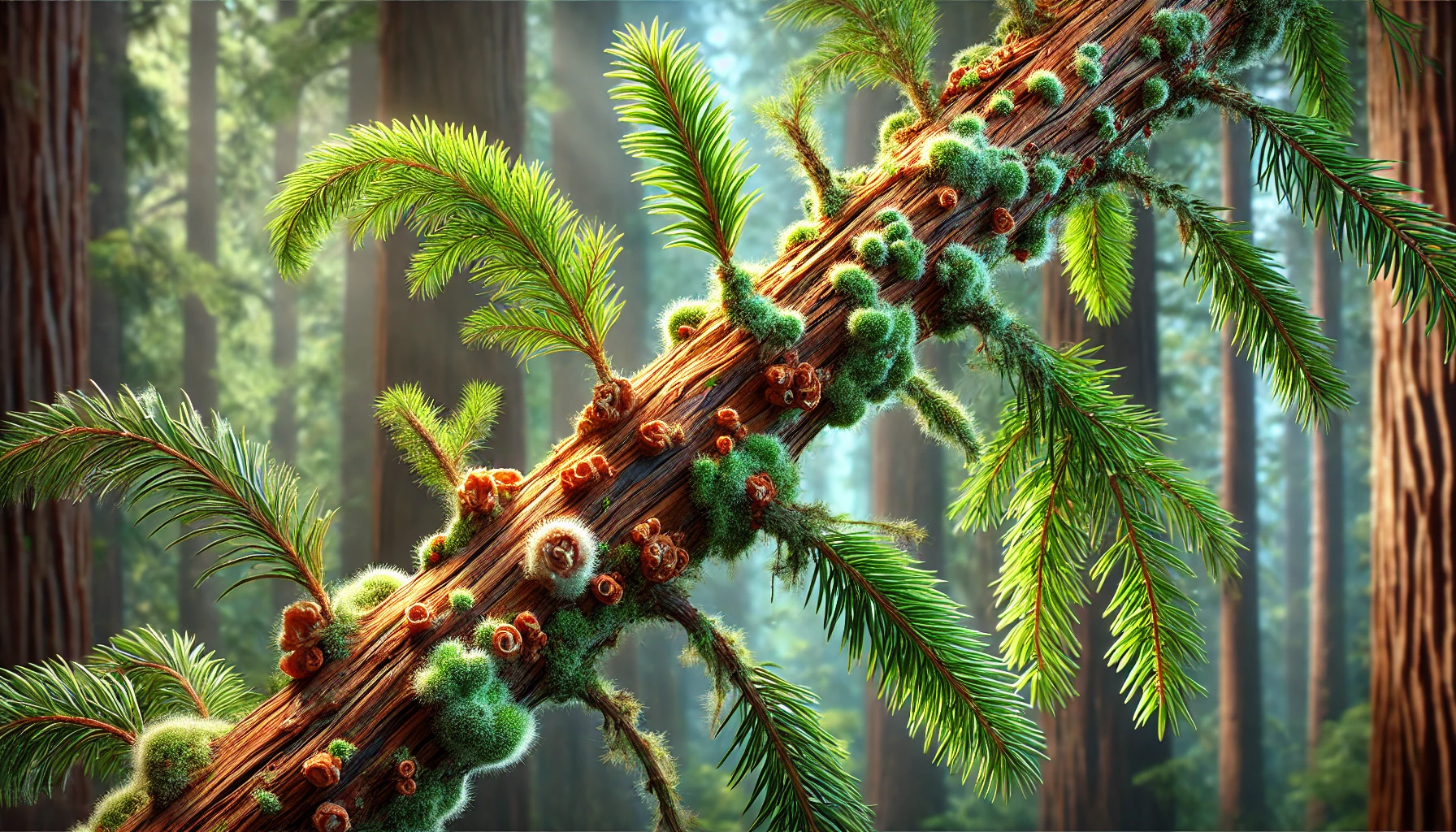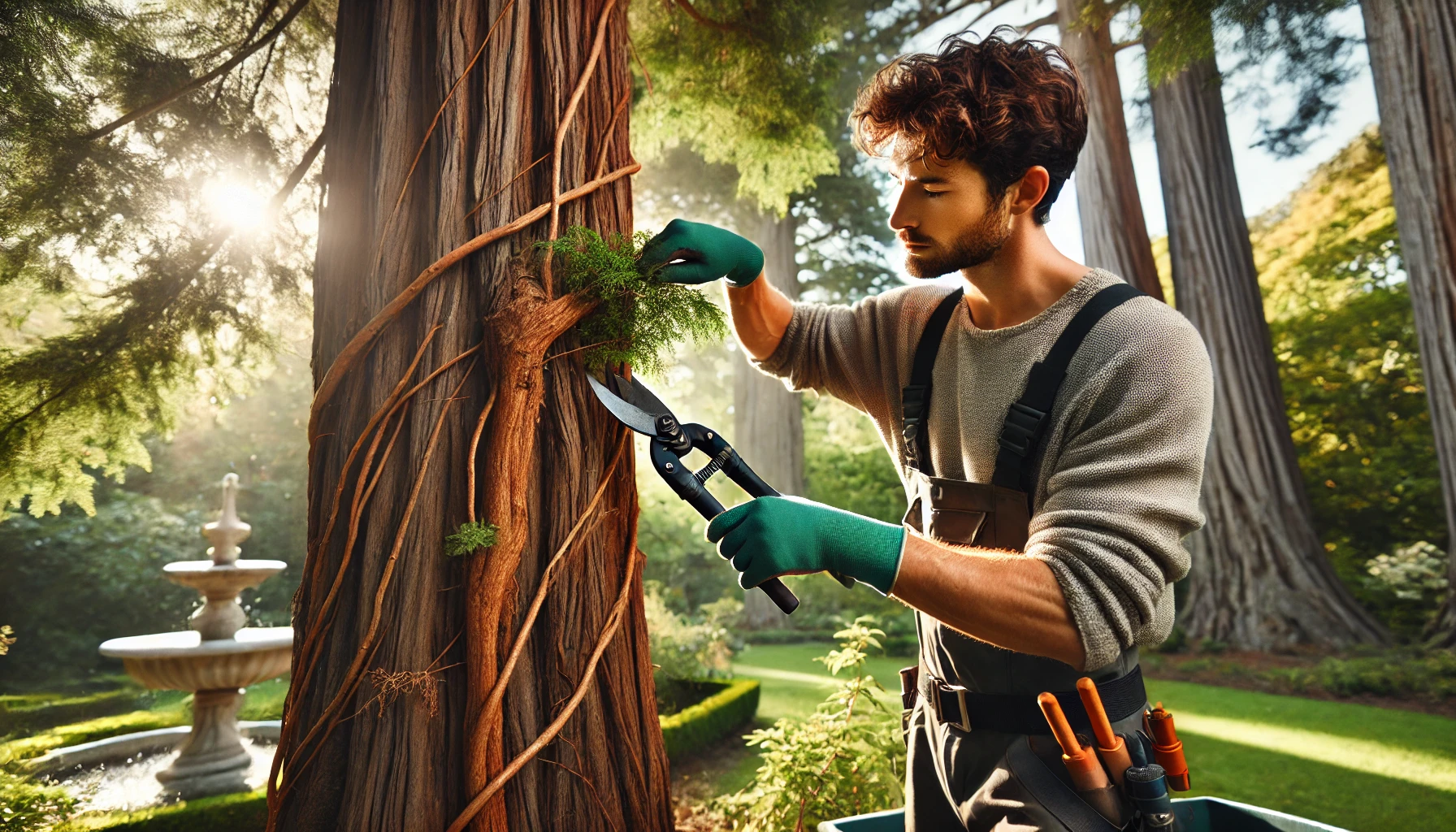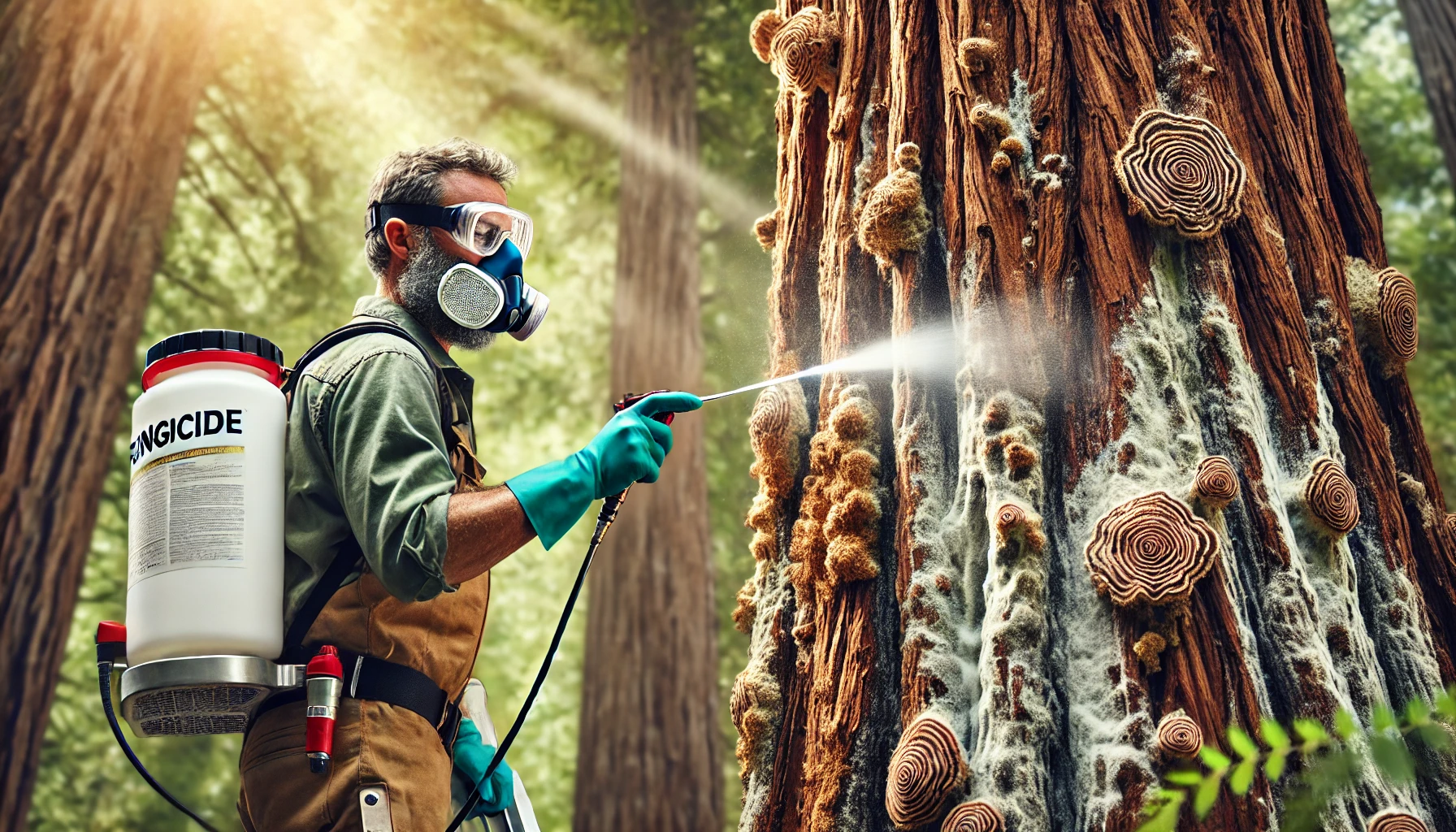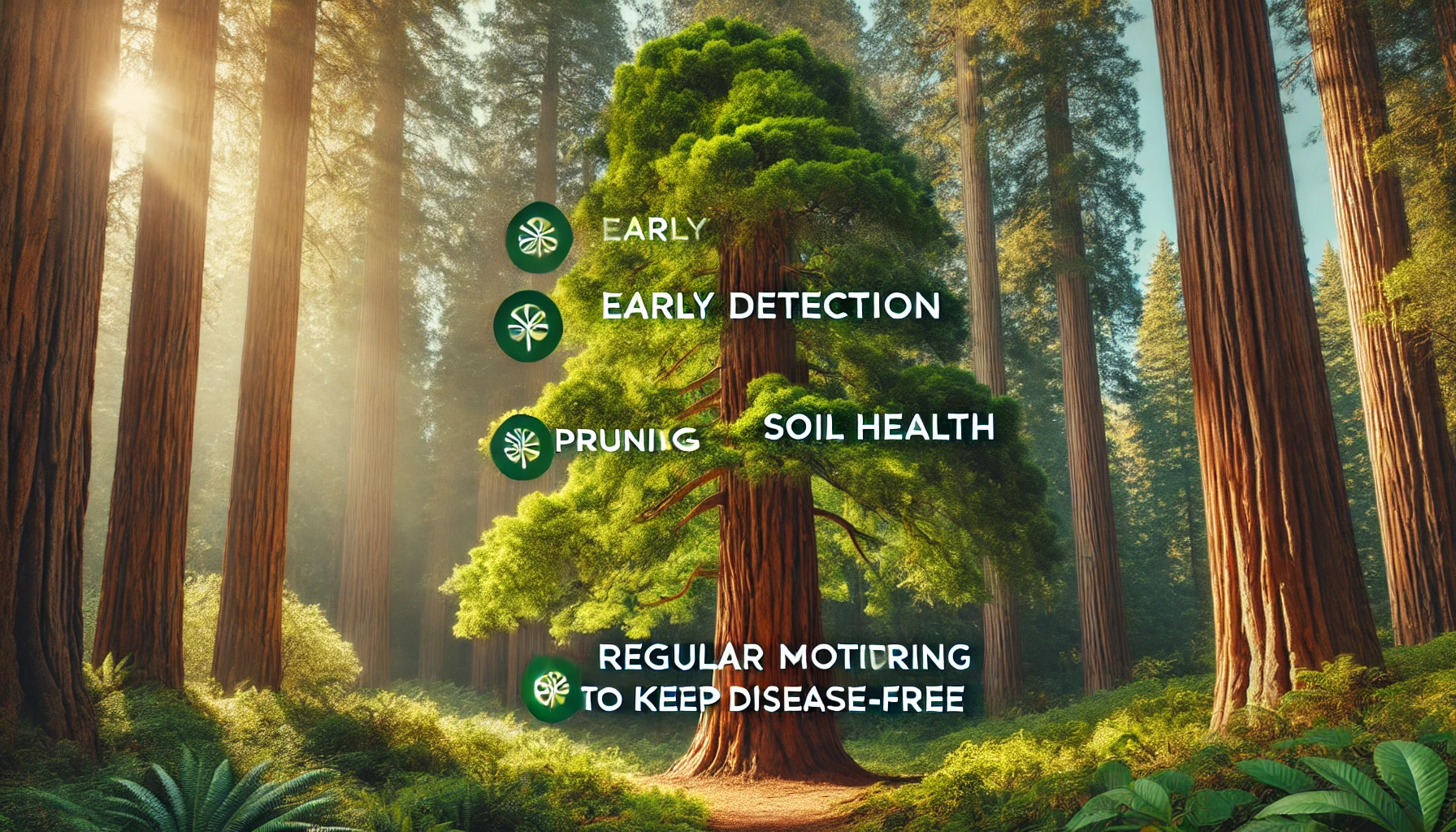
How to Identify and Treat Common Redwood Tree Diseases: Expert Solutions for Healthy Growth
Redwood trees are among the tallest and most majestic in the world, but like any plant, they’re not immune to disease. 
In this guide, we’ll walk you through the most common redwood tree diseases, offering expert tips and practical solutions to help you keep your tree strong and thriving. Whether you’re a seasoned gardener or a beginner, you’ll find actionable advice that will empower you to take control of your redwood’s health. Ready to protect your redwood tree from disease? Let’s dive in!
Table of Contents
ToggleUnderstanding Redwood Tree Disease: Why Prevention Matters 
Redwood trees, known for their towering height and lush greenery, are a stunning addition to any landscape. But, like all plants, they are vulnerable to disease. Understanding redwood tree diseases and why prevention matters is key to maintaining their health and beauty.

The Importance of Prevention
Preventing disease before it starts is always better than treating it once it has taken hold. Redwood trees are hardy, but they’re not invincible. Disease can weaken their structure, make them susceptible to pests, and even stunt their growth. If you want to keep your redwoods thriving, you must take proactive steps to protect them.
Common Risks to Redwood Trees
Redwoods face several threats that can lead to disease, including:
- Fungal Infections: Fungi like Armillaria and Phytophthora can cause root rot, which weakens the tree and eventually kills it if not managed.
- Insect Infestations: Pests like beetles or caterpillars can damage the bark and leaves, leading to weakened trees and open wounds where diseases can enter.
- Environmental Stress: Poor soil, drought, and pollution can all stress redwood trees, making them more vulnerable to diseases.
How Prevention Helps
Preventing disease is all about reducing stress on the tree and minimizing exposure to harmful pathogens. Regular maintenance—such as proper watering, fertilization, and pest control—ensures that your redwoods stay strong and healthy.
- Watering & Drainage: Redwoods prefer moist soil, but standing water can lead to root rot. Ensure proper drainage to avoid waterlogging.
- Regular Inspections: Look for signs of pests, fungal growth, or damaged bark regularly. Early detection can make a huge difference!
- Proper Pruning: Removing dead or infected branches can help reduce the spread of disease and keep the tree’s structure intact.
Taking preventive measures will not only protect your redwood trees but also ensure they live a long, healthy life, offering beauty and shade for years to come.
By staying ahead of potential issues, you can create an environment where your redwoods thrive and grow strong, minimizing the need for extensive treatments down the line. Ready to give your redwoods the care they deserve? Start with prevention!
Common Redwood Tree Diseases You Should Know 
Redwood trees are majestic and resilient, but even they can fall prey to certain diseases. Recognizing these issues early can save your trees and keep them healthy for years to come. Here are the most common diseases that affect redwoods and what you can do about them:
1. Redwood Rust (Cronartium quercuum) 
Redwood rust is a fungal disease that causes reddish, orange-yellow pustules on the leaves and stems. The disease weakens the tree, making it more susceptible to other issues. If you notice discoloration or deformed growth, it might be time to act.
Treatment: Prune affected areas and remove fallen leaves. Applying a fungicide early in the season can help prevent further spread.
2. Phytophthora Root Rot 
This soil-borne pathogen affects redwood trees by attacking the roots, leading to poor growth, yellowing leaves, and eventual tree decline. The disease thrives in wet conditions, making it particularly dangerous in areas with heavy rainfall or poor drainage.
Treatment: Good drainage is crucial! Avoid overwatering, and consider applying a soil fungicide if your tree shows symptoms. If the infection is severe, it may require professional help to manage.
3. Canker Disease (Nectria spp.) 
Canker disease is caused by various fungi that infect the tree’s bark, causing lesions and sunken areas. The tree’s vascular system can become compromised, leading to reduced nutrient flow and dieback of branches.
Treatment: Prune out infected branches immediately and sterilize your tools between cuts. Keep the tree healthy by ensuring it gets the proper amount of sunlight, water, and nutrients.

4. Leaf Spot Disease 
Leaf spot disease appears as small, dark spots on the leaves or needles of the redwood tree. This fungal infection is often a sign of poor air circulation or excessive moisture around the tree.
Treatment: Increase airflow around your tree by pruning dense foliage and removing any dead or diseased leaves. A mild fungicide may help prevent further infection.
5. Wood Decay (Heart Rot) 
Wood decay diseases, often caused by fungi like Phellinus spp., result in the deterioration of the tree’s internal wood. This leads to structural weakness and can even cause the tree to topple.
Treatment: Regularly inspect your trees for signs of decay, such as mushrooms growing on the bark. Pruning dead or infected branches can reduce the spread, but severely infected trees may need to be removed for safety.
By understanding these common redwood tree diseases, you can take steps to prevent and manage them before they cause significant harm. Regular monitoring, proper care, and timely treatment can help keep your redwoods thriving for years!
How to Prevent Redwood Tree Diseases: Key Practices 
Preventing diseases in redwood trees is crucial for maintaining their health and beauty. With a few simple, proactive steps, you can protect your trees from common threats. Here’s a guide to help you keep your redwood trees thriving:
1. Choose Healthy Trees to Start With 
Always purchase redwood trees from reputable nurseries that ensure healthy stock. Healthy trees are naturally more resistant to diseases. Look for trees with vibrant green foliage, strong stems, and no signs of pests or disease.
2. Plant in the Right Spot 
Redwoods love sunlight and well-drained soil. Make sure to plant them in an area that receives ample sunlight and has good drainage. Avoid planting near flood-prone areas where water can collect, as excessive moisture can promote root rot.
3. Maintain Proper Watering Practices 
Overwatering or underwatering can stress your redwoods and make them vulnerable to diseases. Water deeply but infrequently, ensuring the soil is moist but not waterlogged. In dry conditions, water at the base of the tree to avoid wetting the foliage, which can promote fungal growth.
4. Prune Regularly 
Pruning helps to remove dead or diseased branches, improving airflow and reducing the risk of infection. Always use clean, sharp tools and dispose of cuttings properly. Prune your redwoods during the late winter or early spring, before new growth begins.

5. Use Mulch Wisely 
Mulching around the base of your redwood trees can help retain moisture and regulate soil temperature. However, avoid piling mulch directly against the trunk, as it can trap moisture and create a breeding ground for rot. Keep the mulch a few inches away from the base.
6. Fertilize Correctly 
Fertilize your redwoods with a balanced, slow-release fertilizer to ensure they get the nutrients they need without overstimulating growth. Over-fertilization can weaken trees, making them more susceptible to diseases. Apply fertilizer in early spring when the tree is actively growing.
7. Monitor for Pests 
Keep an eye out for pests that can damage your redwoods, such as aphids, scale insects, or beetles. Early detection allows for swift action. If you spot any pests, remove them manually or treat the area with an eco-friendly insecticide. Be mindful of beneficial insects that help control pests naturally.
8. Ensure Good Air Circulation 
Plant redwoods at a proper distance to allow for airflow between them. Crowded trees are more prone to fungal infections, as the lack of ventilation creates a humid environment where diseases can thrive. Proper spacing helps keep the trees dry and disease-free.
9. Inspect Regularly 
Routine inspections are key to identifying potential issues early. Check for discolored leaves, unusual spots, or any signs of pests. The sooner you notice a problem, the easier it is to take action and prevent the disease from spreading.
By following these key practices, you can minimize the risk of diseases and ensure your redwood trees stay healthy and strong for years to come.
With these practical tips, you’re now equipped to prevent redwood tree diseases and keep your trees flourishing. Enjoy the beauty of your redwoods, and remember: a little prevention goes a long way in keeping them disease-free!
How to Treat Redwood Tree Disease Effectively 
Redwood trees are majestic, but like all living organisms, they can fall prey to various diseases. If you notice your redwood tree showing signs of illness, it’s essential to act fast. Here’s how to treat common redwood tree diseases effectively:
1. Identify the Problem First 
Before you treat your redwood, correctly diagnosing the disease is the key. Look for these common signs:
- Yellowing or browning leaves
- Wilting or drooping branches
- Mushy or foul-smelling bark
- Visible fungi or molds
Once you’ve noticed these signs, research or consult an expert to confirm the disease type.
2. Remove Affected Areas 
If parts of your redwood are severely affected, pruning is often the best solution. Carefully remove the diseased branches or roots using sterilized tools. This helps stop the disease from spreading to healthy parts of the tree. Make sure to dispose of the infected branches in a sealed bag, not in your compost pile!
3. Fungicide Treatment 
For fungal infections like redwood canker, using a systemic fungicide can be highly effective. Apply the fungicide according to the manufacturer’s instructions. It’s best to treat the tree during the early stages of infection to prevent further spread.

4. Improve Soil Drainage 
Redwoods are sensitive to waterlogged soil, which can exacerbate root rot and fungal diseases. Ensure your tree has good soil drainage by aerating the ground around its base. Adding organic matter like compost can also help improve the soil’s texture and water retention.
5. Boost Tree Immunity 
A healthy tree is more resilient to diseases. Feed your redwood with a slow-release fertilizer containing nitrogen, phosphorus, and potassium. This will enhance its overall health and ability to resist diseases.
6. Monitor Regularly 
Once you’ve treated your redwood, continue monitoring it for any changes. Regular checks help you catch early signs of disease before they become severe. Keep an eye out for new growth—healthy new shoots are a great indicator of recovery!
7. Consult an Expert 
If the disease persists or worsens despite your best efforts, it’s a good idea to contact a professional arborist. They can provide more advanced treatments, such as injections or specialized pruning techniques.
By following these steps, you can treat your redwood tree disease effectively and help your tree thrive once again.
Key Takeaways:
- Early detection is vital for effective treatment.
- Pruning and fungicides are often necessary.
- Soil health and immunity-boosting techniques help prevent future issues.
- Regular monitoring ensures your tree remains healthy.

Taking good care of your redwood can keep it beautiful and disease-free for years to come!
Conclusion
Caring for a redwood tree is a rewarding experience, but it also comes with the responsibility of protecting it from potential diseases that could hinder its growth. By understanding the common redwood tree diseases and their symptoms, you are already a step ahead in ensuring your tree’s health and longevity.

Timely identification and treatment of diseases like root rot, redwood canker, and needle blight can prevent long-term damage and keep your tree thriving for years. Remember, prevention is always better than cure. Regular maintenance—such as proper watering, pruning, pest control, and fertilization—creates an environment where your redwood can flourish without the threat of disease.
By following the expert tips shared in this guide, you’ll be able to confidently care for your redwood tree, address any issues that arise, and enjoy its beauty for generations to come.
If you suspect your redwood is suffering from a disease, act quickly to address the issue and monitor the tree’s progress after treatment. With the right knowledge and care, your redwood tree will continue to grow strong, resilient, and healthy.
Happy gardening, and feel free to share your experiences or ask any questions in the comments below!
Frequently Asked Questions(FAQ)
What are the most common diseases that affect redwood trees?
The most common diseases affecting redwood trees include root rot, redwood canker, needle blight, phytophthora root rot, and red gum lerp psyllid infestations. Each of these diseases can cause different symptoms, such as yellowing leaves, wilting, or blackened bark, and need to be treated promptly to prevent further damage.
How can I tell if my redwood tree has root rot?
Root rot in redwood trees is often characterized by yellowing leaves, wilting despite proper watering, and slow or stunted growth. To confirm root rot, check the roots for a mushy, foul-smelling texture. If root rot is suspected, improve drainage, remove diseased roots, and apply fungicides as necessary.
What causes redwood canker disease and how can I treat it?
Redwood canker is caused by fungal infections that enter through wounds in the bark. It results in sunken, dark lesions and can lead to branch dieback. Treatment involves pruning infected branches, disinfecting pruning tools, and applying fungicide to stop the spread of the fungus.
How can I prevent needle blight and rust on my redwood tree?
Needle blight and rust are fungal diseases that cause brown spots and premature needle drop. To prevent them, ensure your tree has adequate spacing, improve air circulation, and avoid overhead watering. If symptoms appear, prune infected needles and apply fungicides to control the disease.
What should I do if my redwood tree's leaves are turning yellow?
Yellowing leaves on a redwood tree can be a sign of nitrogen deficiency or root rot. First, check your tree’s soil moisture and drainage. If the soil is too wet, reduce watering and improve drainage. If it’s a nutrient issue, use a balanced fertilizer rich in nitrogen to boost growth.
How can I treat pests like the red gum lerp psyllid on my redwood tree?
The red gum lerp psyllid is an insect that causes honeydew secretion and black mold growth on leaves. Treat it by applying organic insecticides like neem oil or using systemic insecticides. Additionally, prune heavily infested areas and regularly monitor your tree for early signs of pest activity.
Can redwood trees recover from diseases like needle blight or root rot?
Yes, redwood trees can recover from diseases like needle blight or root rot if treated early and correctly. For root rot, improving drainage and removing diseased roots is key. For needle blight, pruning infected areas and applying fungicides can help control the issue and allow your tree to regain health.
What’s the best time to prune redwood trees to prevent disease?
The best time to prune redwood trees is during the late winter or early spring, before new growth begins. Pruning during this period reduces the risk of spreading diseases and allows your tree to heal faster. Always use clean, sharp tools and avoid pruning during the tree’s dormant season to minimize stress.




